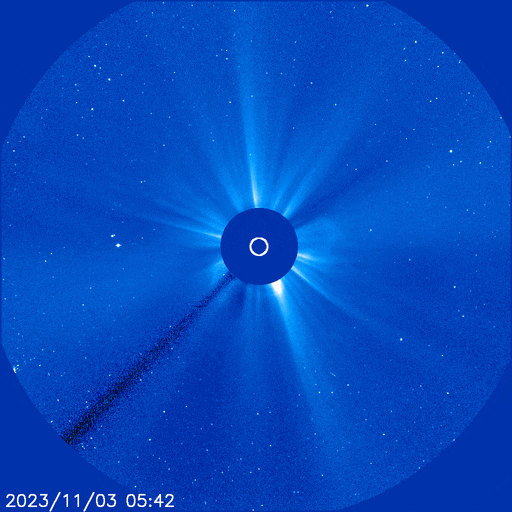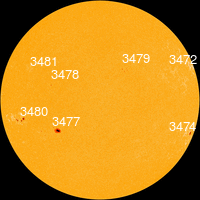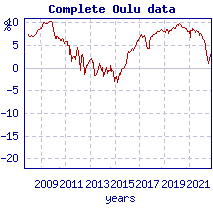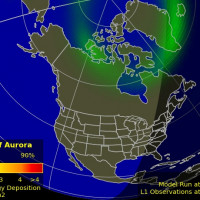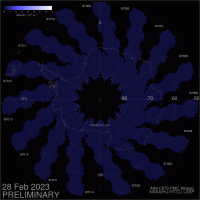| |
Switch
to: Europe, USA, New Zealand, Antarctica
Credit:
NOAA/Ovation
 Planetary
K-index
Planetary
K-index
Now: Kp= 6.00 storm
24-hr max: Kp=
6.00 storm
explanation | more data
Interplanetary
Mag. Field
Btotal: 33.30 nT
Bz: -10.16 nT south
more
data: ACE, DSCOVR
Updated:
Today at 0132 UT
 Coronal
Holes: 05 Nov 23
Coronal
Holes: 05 Nov 23
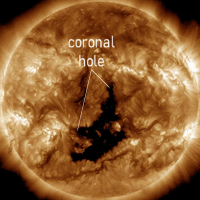
Solar wind flowing from this coronal hole
should reach Earth on Nov. 7-8. Credit:
SDO/AIA
 Noctilucent
Clouds
Noctilucent
Clouds
The northern season for NLCs began on May
26th. The first clouds were detected
inside the Arctic Circle by the NOAA 21
satellite. An instrument onboard NOAA 21 (OMPS LP) is
able to detect NLCs (also known as "polar
mesospheric clouds" or PMCs). For the rest
of the season, daily maps from NOAA 21
will be presented here:
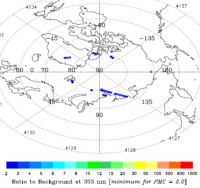
Updated: Aug. 29, 2023
Each dot is a detected cloud. As the
season progresses, these dots will
multiply in number and shift in hue from
blue to red as the brightness of the
clouds intensifies.
What happened to NASA's AIM
spacecraft, which has been
monitoring NLCs since 2007? Earlier this
year, the spacecraft's battery failed.
As a result AIM is offline, perhaps
permanently. There may be some hope of a
recovery as AIM's orbit precesses into
full sunlight in 2024. Until then, we will
maintain AIM's iconic "daily daisy,"
frozen at Feb. 28, 2023, as a show of
thanks for years of service and hope for
future daisies:
 |
 |
 |
Switch
view:Ross Ice
Shelf, Antarctic
Peninsula, East Antarctica, Polar
Updated
Nov05

SPACE
WEATHER
NOAA
Forecasts |
|
Updated
at: 2023 Nov 04 2200 UTC
|
FLARE
|
0-24 hr
|
24-48 hr
|
|
CLASS M
|
25 %
|
25 %
|
|
CLASS X
|
05 %
|
05 %
|
 Geomagnetic
Storms:
Geomagnetic
Storms:
Probabilities
for significant disturbances in Earth's
magnetic field are given for three
activity levels: active, minor storm, severe storm
Updated
at: 2023 Nov 04 2200 UTC
Mid-latitudes
|
0-24 hr
|
24-48 hr
|
|
ACTIVE
|
35 %
|
30 %
|
|
MINOR
|
25 %
|
35 %
|
|
SEVERE
|
10 %
|
20 %
|
High
latitudes
|
0-24 hr
|
24-48 hr
|
|
ACTIVE
|
15 %
|
10 %
|
|
MINOR
|
20 %
|
20 %
|
|
SEVERE
|
30 %
|
40 %
|
|
|
|
